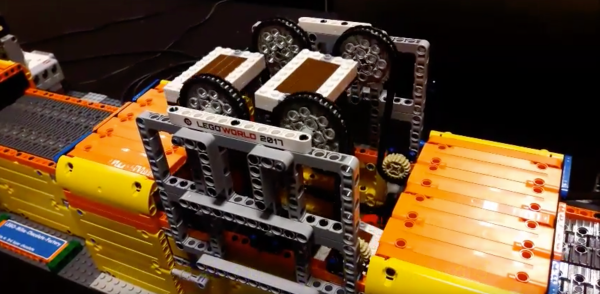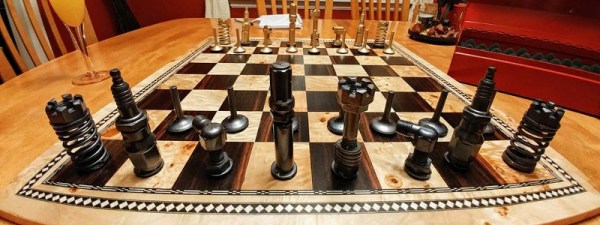[Michael Brandl] got to visit the Milka chocolate factory in Bludenz, Austria and was inspired to build this simulation of the production process for the LEGO world 2017 event in Copenhagen.
The process begins with the empty mold riding on a double row of tank treads. Subsequent modules seem to fill the mold with LEGO ingredients, cool the bars, and remove them from the mold. The last two steps rock: [Michael] built a dispenser that drops a tiny cardboard box onto the line, sized to hold 3 LEGO bars. The box rolls to the end of the line and is picked up by a pneumatic gripper that picks up the box and places it on a pallet.
While more whimsical than the LEGO liquid handler we featured recently, there are a lot of interesting robotic techniques to be learned here. On the reverse angle video you can see more of what’s going on with the wiring of the various motors and sensors. There are six EV3 bricks scattered along the length of the assembly line. The bricks control 15 small motors, 2 large motors, 7 touch sensors, and 3 light sensors. [Michael] added some nice touches, like the combo of two color sensors, seen around 1:45 of the reverse angle video, possibly used to keep the factory operations synced.
Check out [Michael’s] Mindstorms sendup of [Anouk Wipprecht’s] drink bot dress. The LEGO version was built for Robotexotica. In addition, he has a lot of projects featured on his site.
Continue reading “Chocolate Factory Simulation Makes Bars With LEGO”












